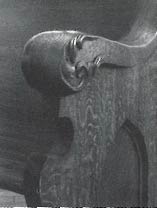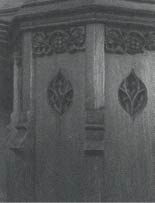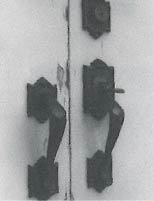updated April, 2025
About once a quarter on a Saturday, it would fall on my plate to lead a new members’ class for those who’d expressed interest in joining the church. Most of the teaching took place in the church’s Christian education building. At the end of the class, however, I would walk the group across the churchyard for a quick tour of the sanctuary. As we approached the substantial doors of our 1920s Gothic Revival edifice, I would turn to my group and proclaim with as much authority as I could muster, “This is not First Presbyterian Church of Missoula, Montana. Right now,” I would explain, “First Presbyterian Church is scattered all around this town, probably spending time with friends and family, and come Monday, they will scatter further to occupy outposts of responsibility for the kingdom in homes, offices, stores, schools, and other important places.” I had grown up with the firm conviction that the church is not a building but the people of God, and I was simply passing this conviction on to the newest members of our church family.
But if our being a church really had nothing to do with this cultural artifact of brick and plaster, why was I drawn to share with these new members the particularities of our shared life together from within this building? As I considered this internal tension, I began to realize that the issue may be a bit more complex than I had previously thought. Having been raised and trained in the Reformed tradition, I was somewhat uneasy with the notion of sacred space. Drawing on Jesus’ words “The hour is coming when you will worship the Father neither on this mountain nor in Jerusalem” (John 4:21b) and “For where two or three are gathered in my name, I am there among them” (Matt. 18:20), I had a firm conviction that God could be worshiped in any conceivable place. I drew comfort from the fact that there weren’t especially sacred places where God would be more present than others. So why did Ifind worshiping God in gymnasium-style churches so uninspiring, and why was I so drawn to churches with substance and durability?

The Role of Memory
The beginnings of an answer to my question came in thinking about the role of memory in salvation history. Repeatedly throughout the Bible we are instructed to remember: “Remember this day on which you came out of Egypt, out of the house of slavery, because the Lord brought you out from there by strength of hand” (Ex. 13:3). And God establishes his faithfulness by reminding us of his connection to our history: “I am the God of your father, the God of Abraham, the God of Isaac, and the God of Jacob” (Ex. 3:6). It dawned on me that I valued certain kinds of church buildings because they seemed to hold memories better than others.
Pushing this idea further, I began to see that buildings hold our memories in three distinctive ways. Visually, they are the setting for many of our direct memories. We remember the house in which we grew up in through associative memories. I distinctly remember the look of our kitchen from the perspective of the back door, and it will always represent (for me) the notion of home. Buildings can also hold memories in a semiotic way—that is, by putting us in contact with symbols that can potentially carry meaning for anyone in our culture. A hospital, for example, contains signs and symbols that may evoke memories of our mother’s death or other significant life events, even if we’ve never visited it before. Lastly, buildings can physically hold memories by recording the collective practices of those who have used the building over time. The worn stairs of an elementary school evokes students from another era participating in a similar activity.
This quality of holding memory in any of these three ways I am calling patina. Patina is, literally, the quality silverware takes on overtime as the subtle scratches of use cause it to take on a deeper luster. Real silverware exemplifies the idea of patina because it not only endures but becomes more beautiful with use. Plastic flatware, on the other hand, does not endure and so never develops patina.

Building for the Short Term
The problem with many modern buildings is that they are built for a relatively short life span, with cheap materials that break rather than wear, and they often lack the kinds of historical references that we need to generate significant meanings. There are no shopping cart ruts on the floor of Costco reminding me of bygone shoppers of yesteryear, nor will the Wal-Mart where my son got his first swimming suit be around long enough for him to bring his son to see it. And the County Courthouse (circa 1972) I visited for jury duty does not remind me of anything about the value of the public realm or our deep commitment to impartial justice because it looks very much like the office building across the street.

By way of contrast, the church in which I was baptized still stands today as a symbolic witness to God’s presence in the neighborhood. The building has aged well and communicates that my baptism was more than a spontaneous accident of history. I can take my daughter there to show her that God continues to be active and faithful in the lives of people today. The act of showing the next generation the places that mark God’s faithfulness in our lives is an act of obedient remembering.
I didn’t grow up in First Presbyterian Church of Missoula, but I think what compels me to drag my class back outside in sub-freezing weather to take a look around the sanctuary is this notion of patina. I want them to see how the church being not only larger but also more carefully constructed than many of their own homes shows a deeper investment in our shared life in Christ than we can muster today. I want them to experience the centrality of the cross and the prominence of the pulpit as we unpack some of the bedrock values that connect us to one another and to those who have gone before us. And I want them to begin to see that there is more to God’s magnificent plan of salvation history than what is happening in our individual lives at this single point in time.

I want them to feel the presence of the saints who have preceded them so that they can resonate viscerally with these words from the book of Hebrews:
Therefore, since we are surrounded by so great a cloud of witnesses, let us also lay aside every weight and the sin that clings so closely, and let us run with perseverance the race that is set before us.
—Hebrews 12:1
Patina is certainly not the only value that we should consider when we think about church buildings, nor is it a value that is always positive. Memories sometimes can become stifling as well as reassuring. A church that focuses only on its memories and its history can easily become a dead museum with no living testimony to God’s faithfulness. There are too many beautiful church corpses throughout Europe and North America for us to forget this sobering reality. If I had to choose, I’d pick a Spirit-filled congregation in a cheap disposable building over a beautiful empty church any day. However, there are a number of vibrant churches that might gain a new appreciation for their “outdated” facility if they could see their building in terms of patina. And perhaps considerations of patina might inspire congregations who are building churches to build them in a way that will hold memories for generations to come.


